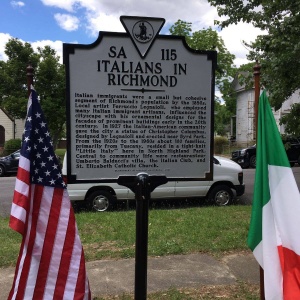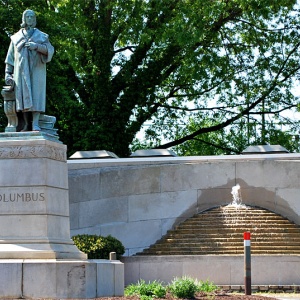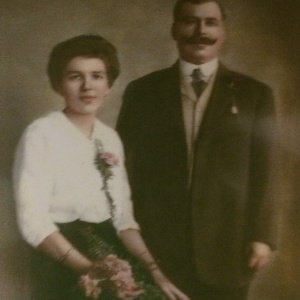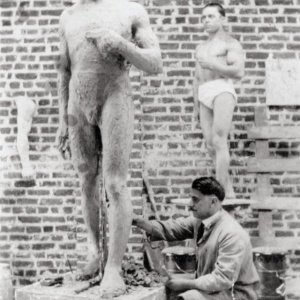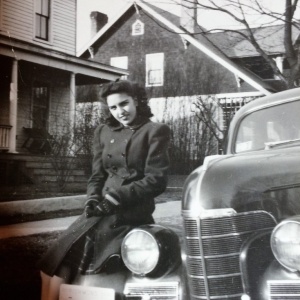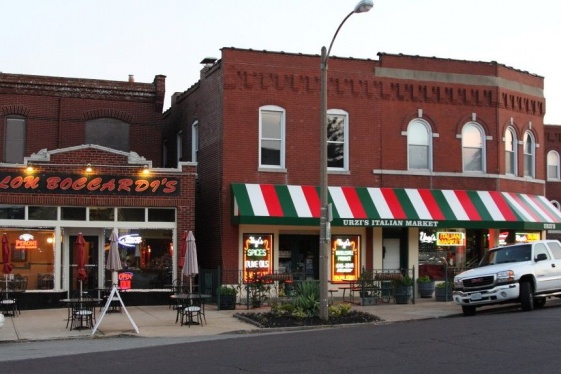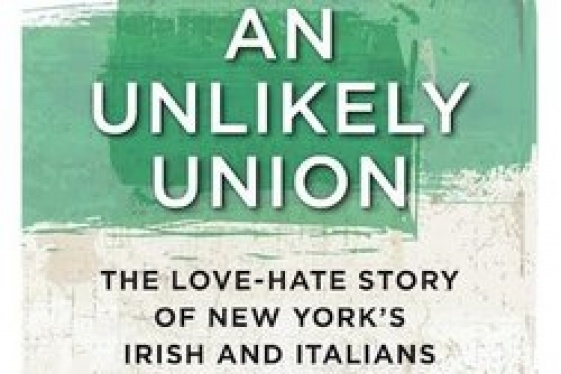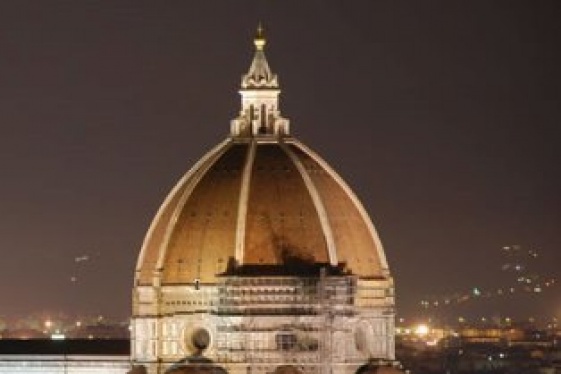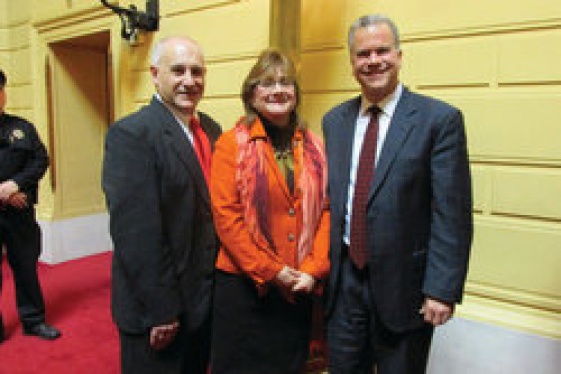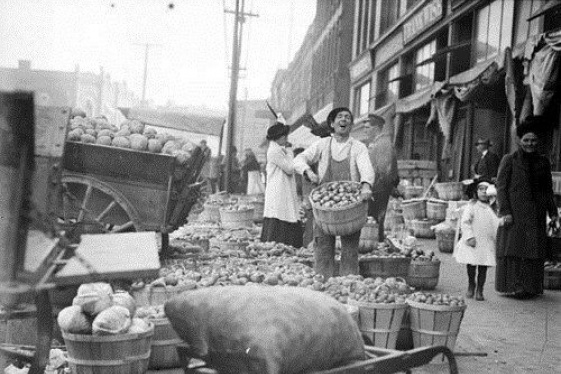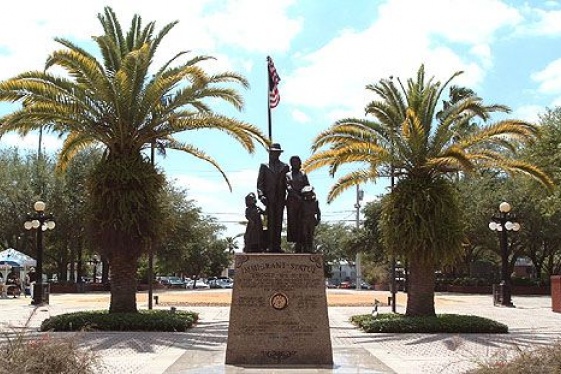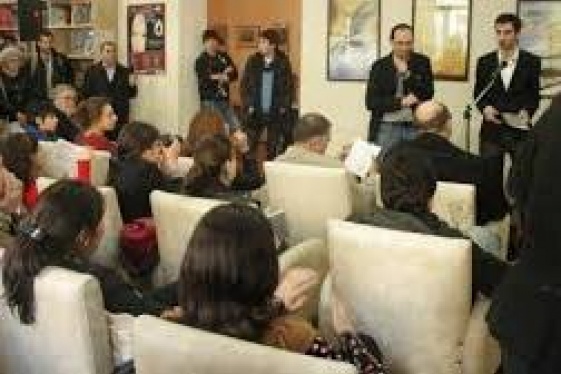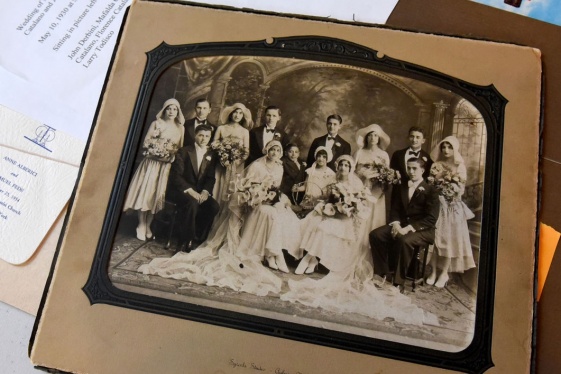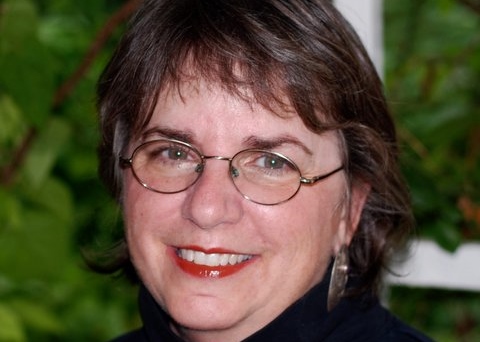
Brenda Giannotti Stankus (Researcher on the Italian emigration to Richmond, VA)
La storia degli italiani che arrivarono a Richmond, in Virginia

One of the things we appreciate most, here at We the Italians, is the commitment many Italian Americans show all over the US to celebrate and remember the history and the presence of their fellow Italians who emigrated to the US. Oftentimes this passion is shown by organizing events and writing books, but many of them wanted and still want to establish something that will forever last: a monument, a plaque, a marker.
The story we tell today is about this commitment, to remember the Italians who emigrated in Richmond, Virginia. And we're happy to welcome one of the two people who made this happen: Brenda Giannotti Stankus.
Last year for the first time, Virginia’s State Department of Historical Resources recognized with a marker the Italian Immigrant community in Virginia, paying tribute to Richmond’s “Little Italy”. Brenda, you are one of the persons we should thank for that...
Ray Gargiulo and I worked alone and together on this project. Not only we successfully obtained a state marker that pays tribute to Richmond’s "Little Italy", it was also the first state marker in Virginia to recognize any immigrant community. It was a three year project with interviews, research and writing, and submitting paperwork and substantiation to the VA State Department of Historical Resources to get this project brought to a vote and then to become reality. It was unveiled on May 7, 2017.
When did the Italians arrive in Virginia? Where did those Italians come from and who were they?
We have records of a number of Italians being in Richmond as early as 1856, who started an Italian Club during those years in what is now considered downtown Richmond. There is a beautiful building on Broad Street, credited to that group. It was where they met and held events such as dances and political discussions about the US and Italy.
The group in "Little Italy" we researched came around the turn of the 20th century and for about 20 years after. This is the group that earned the marker from the State of Virginia. This group of nearly 125 families came primarily from Tuscany and came between 1900 and 1923. Many were sponsored by two men, Umberto Balducci, restauranteur; and Ferruccio Legnaioli, sculptor and plasterwork moldmaker.
These immigrants came from the towns of Barga, Lucca, San Giovanni Valdarno, and Vicopisano. They were not the only Italian immigrants in Richmond, but this is the group that lived together first in Navy Hill and Shockoe Bottom. Then, when enough money was put aside, they all moved to the northern part of the city and lived in a new community named North Highland Park with new jobs, mostly downtown construction. We have records of approximately 100 addresses in this little neighborhood were these Italian families lived.
Is there one or more particular stories you want to mention about these Italians?
The two architects Giannini and Taliaferro were called to Virginia from London. Anthony Giannini was called by Thomas Jefferson, for collaborating his work on Monticello; Benjamin Taliaferro was called by Carter, Virginia’s first Governor, for work on the Carter Plantation.
Taliaferro became part of the first faculty at the college of William and Mary, in Williamsburg, VA, the first and oldest college in America. Anyone can view his name on a plaque marking the founding fathers of the school in the Wren Building on the campus.
There is another quite interesting story we ran into during our research about Taliaferro and the famous Booker T. Washington, an American educator, author, orator and adviser to Presidents of the United States. It appears that he is a direct descendant of Taliaferro, the architect. It is said that Mr. Washington’s father was a grandson of that Taliaferro. When the marriage ended early, the mother gave her son her last name and made his father’s last name his middle name: Booker Taliaferro Washington.
As you anticipated, when we think about Italy and Virginia, it is impossible not to mention Thomas Jefferson...
Jefferson brought over another Italian gentleman, Philip Mazzei, who then did return to Italy. He came to help Jefferson raise grapes. Jefferson gave him land next to Monticello but the grape crop failed. The idea has proved to have merit as today, with better knowledge of the soil, wineries are becoming very successful.
Before returning to Italy, Mazzei, who had also brought Roman Literature about governing with him, translated these works for Jefferson and left the translations with him. The phrasing and wording from these were helpful to Jefferson in writing the Constitution of the United States. Several passages were paraphrased by Jefferson. This story is told during tours of Monticello.
Please tell us something more about the Little Italy in Richmond, and if there are other places – maybe a Christopher Columbus Statue? – that are particularly important to represent Italy in Virginia.
As I told you, the unique thing about Richmond’s Little Italy is that they, for the most part, came from the same 4 towns in Tuscany, Barga, Lucca, San Giovanni Valdarno and Vicopisano. These were not the only Italian immigrants in Richmond, but this is the group that created their own community, complete with a Villa modeled after the "Old Country".
They used to have Sunday dinners in the yard of the Villa for the whole community and remained there together from the early 20th century until the 1960 and further, and most importantly changed the face of our city with their skills and talents. They brought their knowledge of Romanesque archictectural trimmings to the interiors and the exteriors of city and state buildings and churches, theaters and mosques. Richmond was finally being rebuilt after the losses incurred during the US Civil War and its aftermath, and the appearance of the city was given a specific, unique personality by these Italian artists.
Others in this group introduced Italian cuisine to Richmond, something that had not happened before. Most of the restauranteurs owned two, three or even four Italian restaurants each. They were family affairs.
These people offered meals to the political leaders of this community and befriended the police, and became a valued part of the community themselves. They all sent their children to college, highly valuing education, intelligence, church, good manners, a sense of humor and family above all else. They still are members of their Italian Club, the Giuseppe Verdi Lodge of the Order of Sons of Italy.
The Christopher Columbus Statue in Byrd Park was unveiled in 1925. The $30,000 to realize it were all contributed by the Italian community as a gift to Richmond. But it was not accepted wholeheartedly. The Italian Community was grateful and pleasantly surprised when the Governor and the city Mayor attended the unveiling. From then until today the Italian community has held an annual ceremony at the statue on every Columbus Day.
What if I ask you about one or more personalities that had a significant role in representing Italy in Virginia?
In our research we found that some of the Tuscany skilled tradesmen who had immigrated to Richmond to be employed working on Richmond’s interiors and exteriors, were called up to Washington, DC to work on the same parts of the construction of the US Capitol and other government buildings. They were in demand for their cement and plaster mold-making skills.
In Richmond, two very important Italians were Umberto Balducci and Ferruccio Legnaioli.
Umberto Balducci sponsored many of the Italian immigrants with the necessary promise of work and the $200 needed to meet the requirements to immigrate. Many of the elders remember him as the community problem solver and his home was where most community activities happened, social and political. Balducci had four restaurants. Three of the younger of his twelve children still survive. Reno Balducci, here in Richmond, is a very healthy and active 93 year old, going to his office daily, a residential construction company that he shares with his 2 sons. Umberto Balducci also built his villa on a whole city block in North Highland Park and as each of his children married he built them a home on this same land. It was Balducci that the other Italians followed into this community of North Highland Park, where they achieved a population of over 100 homes and families living near one another at the same time. This is the neighborhood where our marker is now placed.
Ferruccio Legnaioli brought over and employed 35 skilled artisans and sculptors from the Florence area. He was the instrumental person in acquiring the attention of the city leaders here in Richmond, letting them know that he could provide this specific talented labor force to build the look of the city of their dreams. He granted for these men and their families, gave the necessary immigration credentials and helped them settled in North Highland Park community at that same time that Balducci was doing the same, helping his friends from Italy settle here. Later it was Legnaioli who sculpted the Christopher Columbus Statue we spoke of earlier, as well as other figurative sculptures in Virginia.
You may be interested
-
“The Hill” St. Louis’ Little Italy
When the fire hydrants begin to look like Italian flags with green, red and white stripes,...
-
An Unlikely Union: The love-hate story of Ne...
Award-winning author and Brooklynite Paul Moses is back with a historic yet dazzling sto...
-
Lecture and Concert that bring Italy to New...
Saturday, february 28 - 7 pm ESTChrist & Saint Stephen's Church - 120 W 69th St,...
-
Polisena delivers address as state lawmakers...
"Italian-Americans came to our country, and state, poor and proud," Johnston Mayor Joseph...
-
The “Little Italies” of Michigan
In doing reseach for this post, I was sure that Italian immigrants found their way to Detr...
-
Ybor City – Florida’s Little Italy
"The people who had lived for centuries in Sicilian villages perched on hilltops for prote...
-
''La Gente di Mulberry Street'' presentato a...
Valsinni- Italia, terra di emigranti. Presentato a Valsinni il nuovo saggio storico di Raf...
-
'A better life': Cayuga Museum showcases Ital...
When Cayuga Museum Executive Director Eileen McHugh was approached by a group of Italian-...





